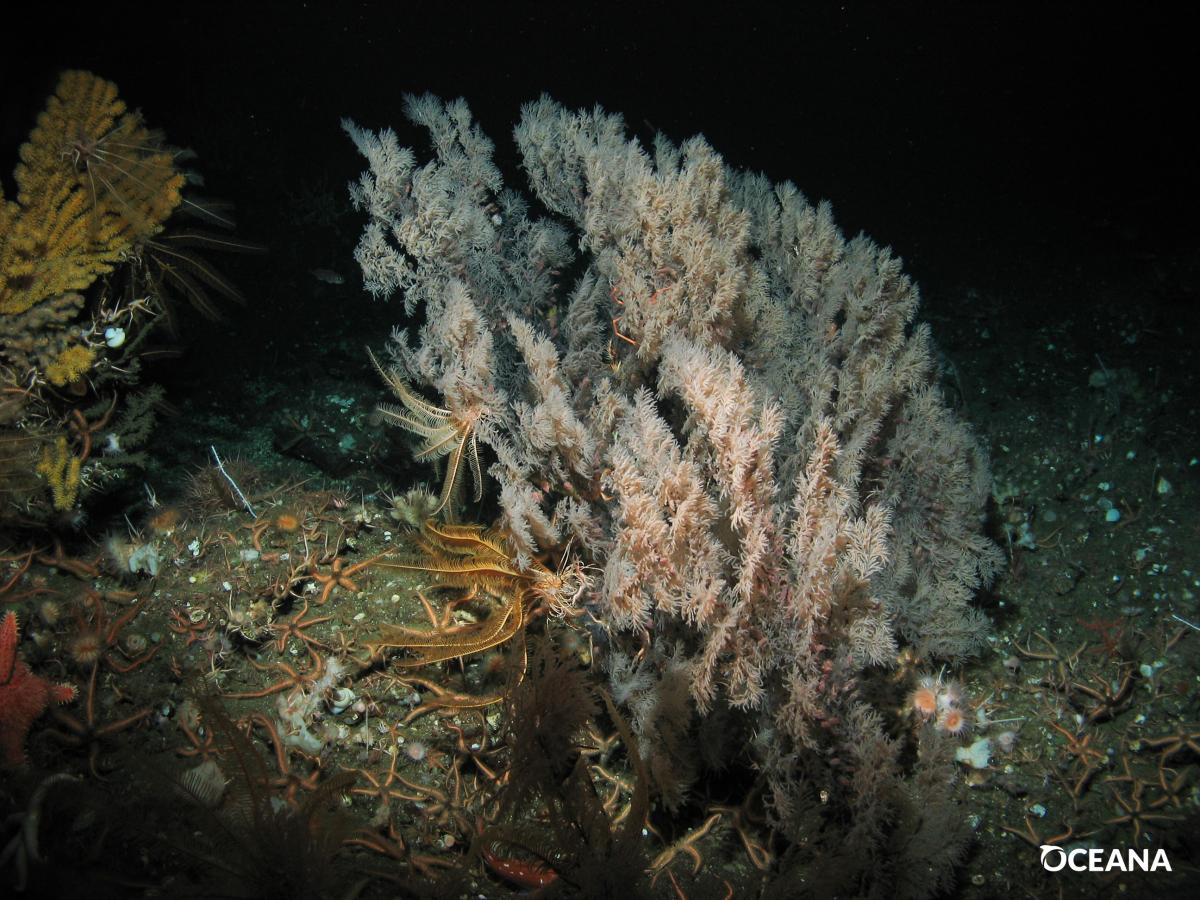August 10, 2016
Exploring the “Footprint” After 10 Years of Protection
The captain of the R/V Shearwater and his crew ran the research vessel all night – 130 miles – back north to Anacapa Island. By 9:00 am we had the ROV back in the water. A blue whale, the largest animal to have ever lived on Earth, greeted us as we surveyed Anacapa Ridge with the ROV. The bottom of the ridge was layered with silt; and spot prawns, with their eyes glowing in the dark, decorated the seafloor. As we propelled the ROV higher up the ridge we found the unique sight of a pale half-eaten carcass of a California sea lion being grazed upon by the sea urchins and prawns. Then, even higher, we started to encounter black corals and gold corals growing on the edges of boulders and cobble.
NOAA deep-sea coral scientists recently explored parts of Anacapa Ridge. Our survey will further contribute to the overall characterization of the habitats and marine life living on this deep and narrow ridge that parallels the south side of Anacapa Island. As scientists it is exciting to further the understanding of our oceans. As conservationists, it is also our goal to protect these places that contribute to the productivity of our oceans.
After surveying the deep ridge, we explored an amazing protected area called the “Footprint”. The area of the Footprint we explored was first protected in 2006 by the Pacific Fishery Management Council as an Essential Fish Habitat Conservation Area closed to all bottom contact fishing gear when the Council adopted Oceana’s conservation proposal to protect habitat. Later, this area was established as no-take marine reserve as part of the Channel Islands National Marine Sanctuary network of marine protected areas. On our ROV dives, we saw immense coral gardens including gold coral, reef-building lophilia coral, black coral, bubble gum coral and schools of hundreds of rockfish and dozens of lingcod. We also saw signs of past fishing activity, including a longline of shrimp traps that had broken off on the reef. While this amazing sight is thankfully protected, many other habitats remain vulnerable to damaging fishing impacts like bottom trawling. We are grateful we could document the positive example of the Footprint conservation area; and will continue working to protect additional sensitive ocean habitats.

A black coral on the far right is accompanied by crinoids and brittle stars sequentially to the left.
MOST RECENT
September 3, 2025
Air Raid Panic to Informed Skies and Seas: The National Weather Service in a Nutshell
August 29, 2025
August 22, 2025
Corals, Community, and Celebration: Oceana Goes to Salmonfest!



